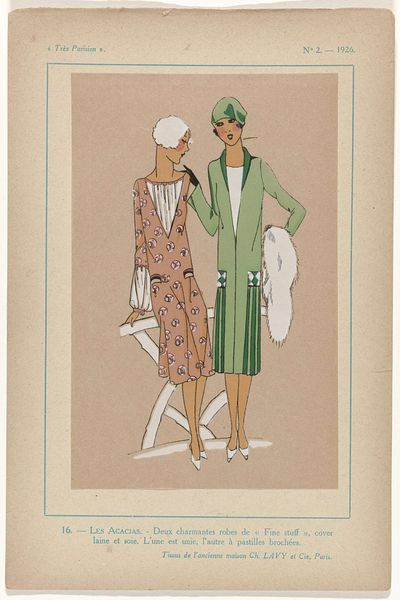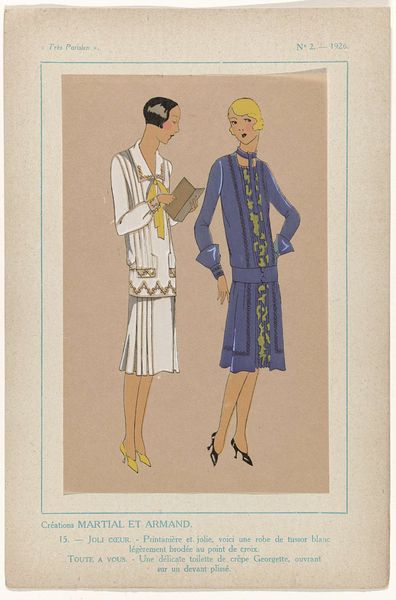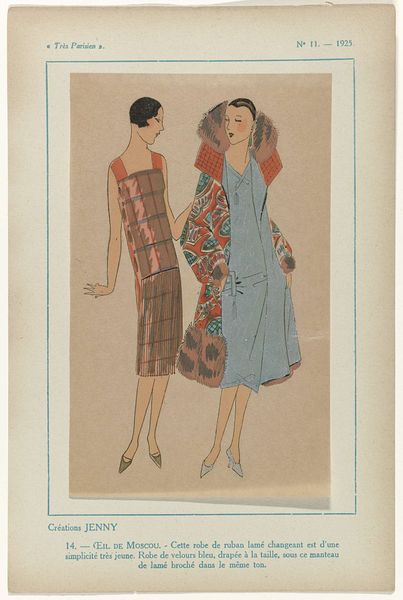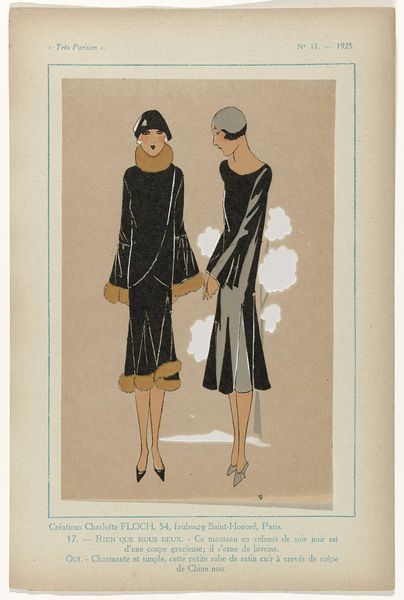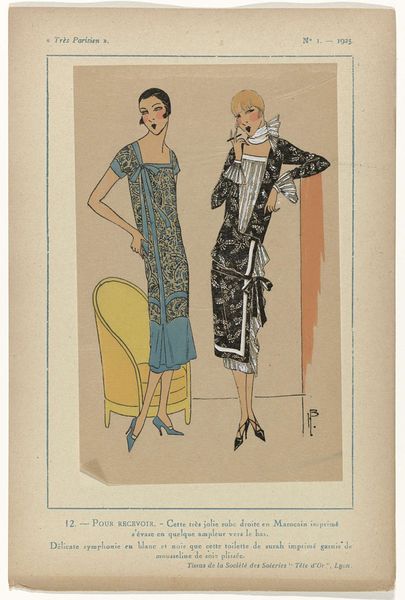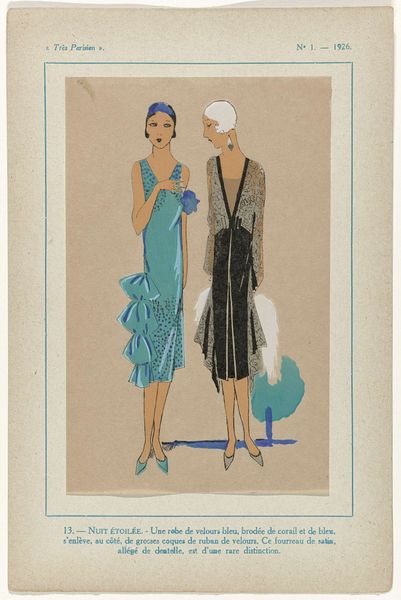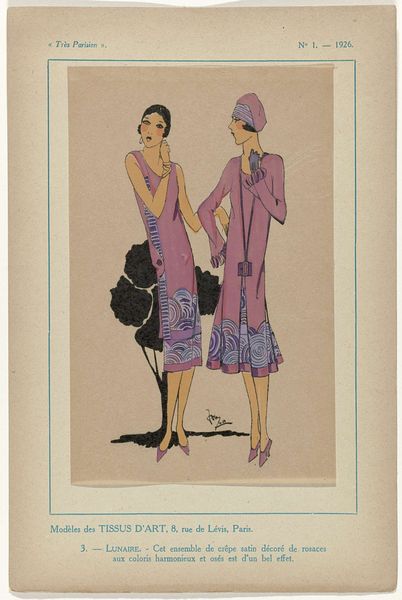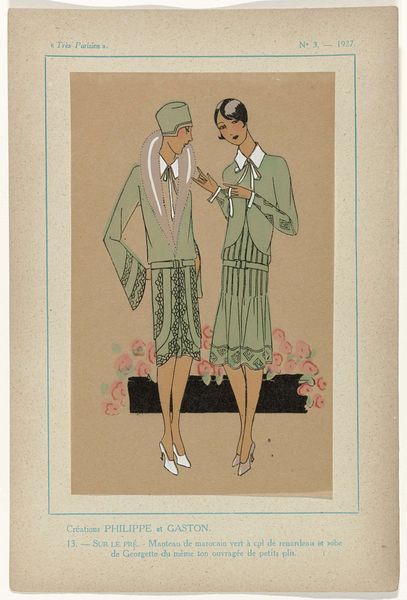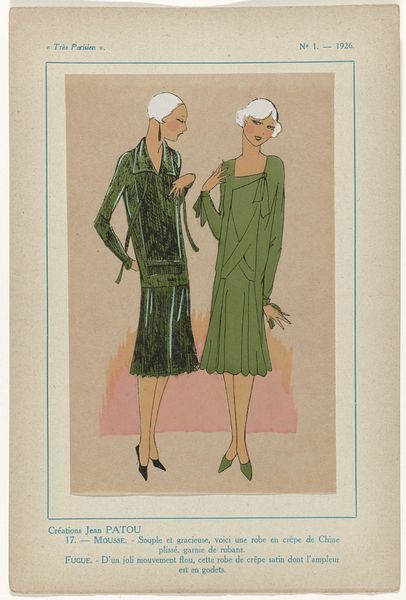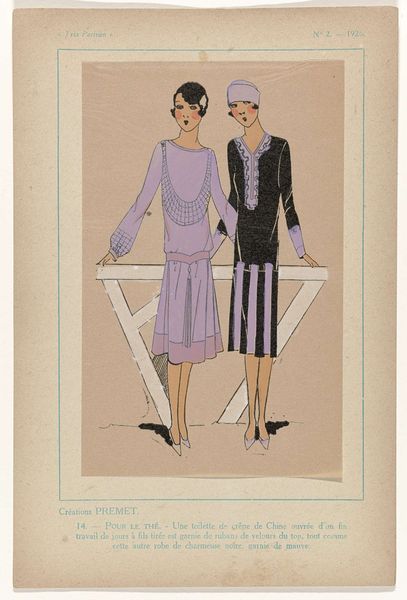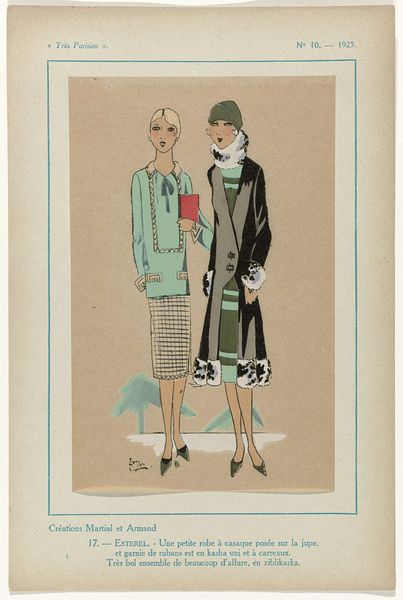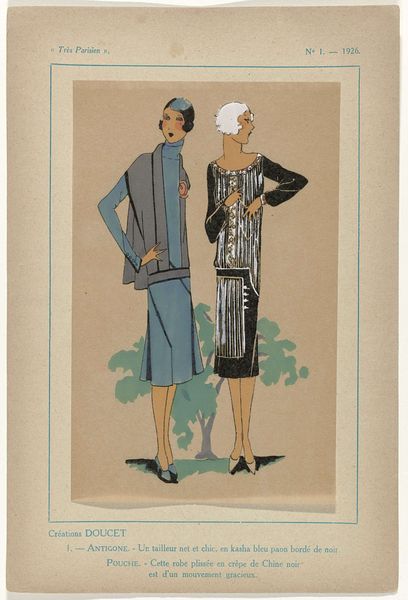
Très Parisien, 1926, no. 2, Pl. 10: Créations Jean PATOU - NÉNUPHAR 1926
0:00
0:00
drawing, watercolor
#
portrait
#
art-deco
#
drawing
#
traditional media
#
figuration
#
watercolor
#
watercolour illustration
#
watercolor
Dimensions: height 195 mm, width 120 mm, mm
Copyright: Rijks Museum: Open Domain
Curator: Looking at "Très Parisien, 1926, no. 2, Pl. 10: Créations Jean PATOU - NÉNU PHAR," a watercolor and drawing by G-P. Joumard in the collection of the Rijksmuseum. Editor: There’s an immediate sense of light industry to this. The palette, while delicate, still feels somewhat manufactured, particularly the pastel hues. Almost an assembly line sensibility of making art. Curator: Yes, there’s definitely that tension between artistry and industry. This was part of a series showcasing Jean Patou's fashion designs, situating these garments within the broader landscape of Parisian style and consumer culture. Who gets to participate, and what images are deemed worthy. It highlights both luxury and exclusion, when looking at broader cultural moments. Editor: It makes sense then. So, focusing on production, how were these distributed? Were they mass produced or handcrafted and sold to high society? Was it merely a sample that would travel for business and commercial opportunities? Curator: These illustrations were published as fashion plates, so, disseminated through magazines, or sometimes sold as individual prints. A wider audience certainly had visual access, even if the clothes themselves were luxury items out of financial reach for most. Editor: And that crepe de chine, as well as the georgette sable with its gathered, pleated frills from the description, implies access to raw materials due to new global trade partnerships during this period. Curator: Exactly, you’re making note of global networks and labour practices that enable this vision of Parisian chic, the relationship between design and manufacturing, distribution, and consumption. Editor: Looking closer I notice how little painterly technique is going on in here. The color is clearly there to suggest textures more than depict any physical likeness. The watercolor technique, for example, just looks applied and basic. Curator: Yes, it's about capturing an ideal of form rather than a detailed representation of texture. I find these images deeply indicative of changing dynamics in visual representation with new kinds of audience awareness. Editor: Seeing the illustration through the lens of material production gives you an uncanny insight to gender and labour inequalities of the early twentieth century, more than any idealized vision of the female form it promises. Curator: Absolutely, seeing this piece in conversation with fashion history opens new considerations. What are the gendered dimensions? To understand the complex socio-political realities from then to the impact they carry now. Editor: Definitely. Examining "Très Parisien," with its watercolours and focus on fashion, encourages to dive into labour, and the processes that go into what it is showing. It is only at that point when real impact takes place. Curator: Absolutely. For me, that means not only tracing its origins and influence, but also examining how representation impacts identity, in a contemporary setting.
Comments
No comments
Be the first to comment and join the conversation on the ultimate creative platform.
